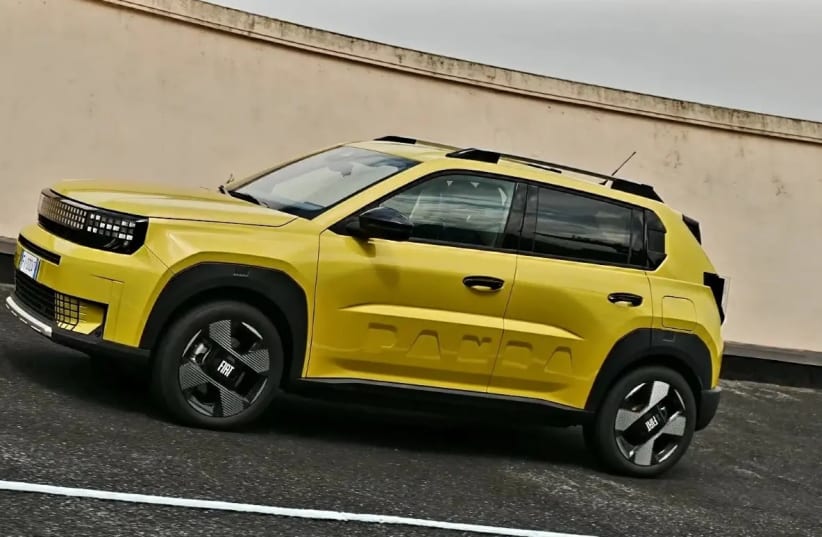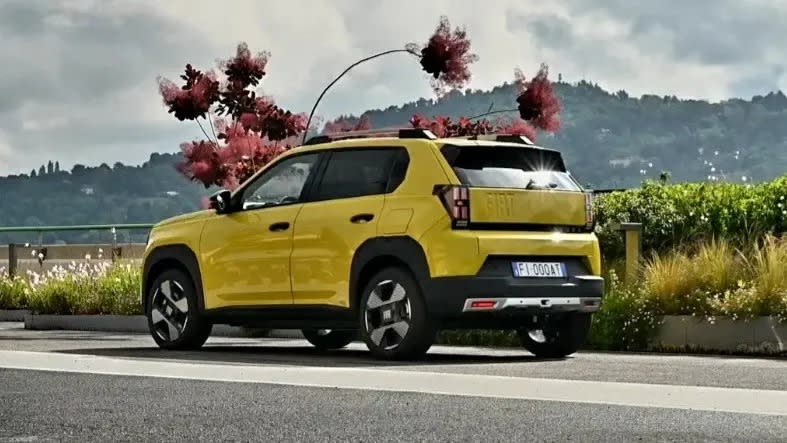A month before its full reveal at Fiat's 125th-anniversary celebrations, the Italian manufacturer released initial images and details about the new generation of the Panda, after hinting about it earlier this year.
The legendary small car, which has been in production since 1990, has significantly grown from a mini car to a supermini, while promising to remain one of the cheapest cars on the market. The current Panda, the third generation produced since 2012, will continue in production at least until 2029, remaining one of the best-selling cars in Europe, particularly in Italy.
The name will change to Grande Panda, with the new model extending to a length of 3.99 meters, 24 cm more than the current model. It is a sibling model to the new Citroën C3, 3 cm shorter than the C3, and 7 cm shorter than popular superminis like the Seat Ibiza. However, it is 13 cm longer than the Suzuki Swift.
The design is tougher and more square, including jeep-like roof rails, which might create slightly more spacious passenger and cargo areas, and also serves as a design tribute to the first-generation Panda 4x4, one of the legendary versions of the model, still popular among residents in snowy regions of Europe.
The driver's area will include at least in the equipped version, a pair of screens, one for multimedia and operation, and one as an instrument panel, expected to be simple and durable.
Fiat has not yet revealed full technical details, but the power unit options are expected to be the same as those of the Citroën, as part of the effort to reduce costs and increase manufacturer profits: an electric unit with 113 horsepower and a 44 kWh battery, with a range of about 320 km, and a mild-hybrid unit, 1,200 cc, with 100 horsepower from the gasoline engine and 28 horsepower from the electric motor, in 6-speed manual and automatic versions with a 7-speed dual-clutch robotic gearbox, with an official combined fuel consumption figure of about 18 km per liter.
The price has not yet been disclosed but is expected to be lower than the Citroën, as part of the effort by Fiat and Citroën's parent group, Stellantis, to compete with the super-cheap Dacia Sandero, which has become one of the top three best-selling cars in Europe in recent years. So, it can be expected to be less than €15,000 for the manual gasoline version and less than €23,600 for the electric version. Translated to the local market, this means about NIS 80,000-90,000 for the manual, about NIS 90,000-100,000 for the automatic, and about NIS 110,000-120,000 for the electric version.
Fiat has also not yet announced where the car will be manufactured. The Italian company is in conflict with the Italian government, which is angry about the outsourcing of Fiat and Alfa Romeo model production to cheaper countries, at the expense of Italian employment. Against this backdrop, Fiat announced that it will produce a mild-hybrid version of the 500 in Italy, and it is possible that the announcement of the continued production of the current Panda is also intended to soften the news that the Grande Panda will be manufactured alongside the C3 in Slovakia.
Fiat's importer stated that the Grande Panda will arrive in Israel during 2025.

